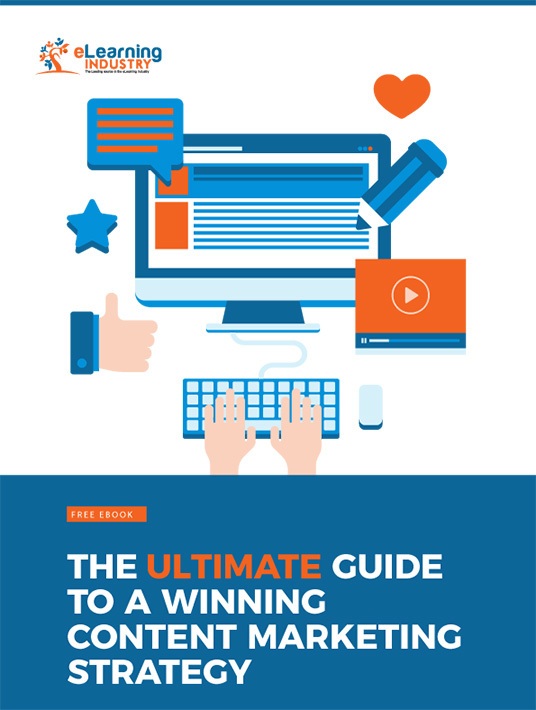5 Innovative Inbound Marketing Strategies For Every Organization
Over the past few years, content marketing has been refined to an art. The basics are clear. Create helpful material in consumable chunks. Update your online assets frequently to keep visitors coming back. Develop a content cycle where your different channels support each other. A good system involves using social media to amplify web content. You should also use your website to dig deeper into areas where social media lacks adequate scope. Beyond the content itself, there are several key strategies that can help you make the most of your inbound marketing. Let’s look at them now.

1. Get Back To Basics
There's no need to reinvent the wheel. Sometimes the most innovative approaches are the simplest. Many brands set unrealistic Key Performance Indicators that demoralize the team and end up throwing a spotlight on artificial failure. Use a down-to-earth, strategic, inbound marketing method to set your online brand goals. Begin by capturing a few basic stats. Check the number of unique visitors you get every day, week, or month. Compare that figure with the number of clicks that convert into prospects, or even actual sales. You should also check how people get to your site in the first place. Which links brought them over, or what search words did they use? If you have a newsletter, track how many subscribers you have, and whether they engage with the newsletter. Do they respond to emails? Do they open the email at all? There are tools to help you gather all this data. Once you have a realistic picture of your current web metrics, use them to set yourself some reachable goals.
2. Throw Slogans Out The Window
Your visitors want to know exactly what you will do for them. They need to know why they should be on your site, offering you their time and money. It’s helpful to sum up your reason in a clear, simple sentence. Use strong verbs to show exactly what you will do for them, or what you’ll help them do for themselves. Don’t use your slogan or tagline. Slogans are often abstract and clever, while your value proposition needs to be functional and instructive. Your value proposition should utilize SEO as a starting point. It needs to pull prospects to your site and keep them there. Place it on a prominent part of your website, so that visitors can’t miss it. Use a classic font and style for your value prop, so that it doesn’t get mistaken for clickbait.
3. Rethink Your Definition Of "Conversion"
Usually, when we talk about conversion, we are talking about sales. However, conversion can be simplified on other levels. You can think of it as getting your client to do something you’d like them to do. Conversion metrics could include following your brand on social media, or registering for a newsletter. It might mean downloading an eBook or signing up for a class. Use a copy that has a clear call-to-action, guiding web visitors on what you’d like them to do. You can also use visual cues like color, line, and directional design. These can draw the visitor’s eye to specific sections of the page. For example, you can draw their eye to your sign-up form, or your social media icons. Make conversion itself an easy, one-step process. For social media integration, visitors can follow by clicking the Twitter, Instagram, or Facebook logo.
4. Use A Contact Form With A Twist
Effective content marketing is a two-way street. You want customers to talk back. The best way to stay in touch with leads is to use a contact form. If the form is used to sign up for a newsletter, remember to include a verification step. You should also mention that they are agreeing to receive occasional updates. The updates should be spread out to avoid overwhelming customers and having them brand you as spam. Contact forms have key advantages over typing your email address on your website. They prevent spam because web crawlers can’t automatically harvest your address from your contact page. They also prompt prospects to get in touch because of ease. Contact forms have a one-step process. The customer doesn’t have to go back into their own email provider to get in touch with you. They can do it all right there on your site.
5. Reach Out On Social Media
Social media sites give us the rare opportunity to interact directly with the consumer. And one of the best ways to grab their attention while gathering valuable feedback is by asking questions. Specifically, a thought-provoking question that catches them off guard and focuses on a hidden pain point. For example, "Is your LMS helping or hindering your online training ROI?" This question prompts them to think about their current platform effectiveness and whether it still meets the needs of their organization. If not, they may become prospects for your new LMS product.
Inbound marketing can be used to good effect, but only if you do it right. If you don’t optimize your content marketing, you’re basically producing spam. To ensure that your strategy is sound, use analytics to measure your metrics. Monitor them consistently and tweak your content accordingly. Craft a brief tagline to tell your clients what you’re offering them, and how it will benefit their lives. Ensure that your web elements are built with conversion in mind, and provide a simple contact form. These are just a few must-have items in your content marketing plan. Use them well to boost the effectiveness of your eLearning marketing efforts.
Are you interested in exploring the basics and benefits of content marketing? Download our eBook The Ultimate Guide To A Winning Content Marketing Strategy to get more tips and tricks on how to generate leads, drive traffic to your site, boost conversion rates and use the SEO/SEM and Google Revenue Model to your advantage.

